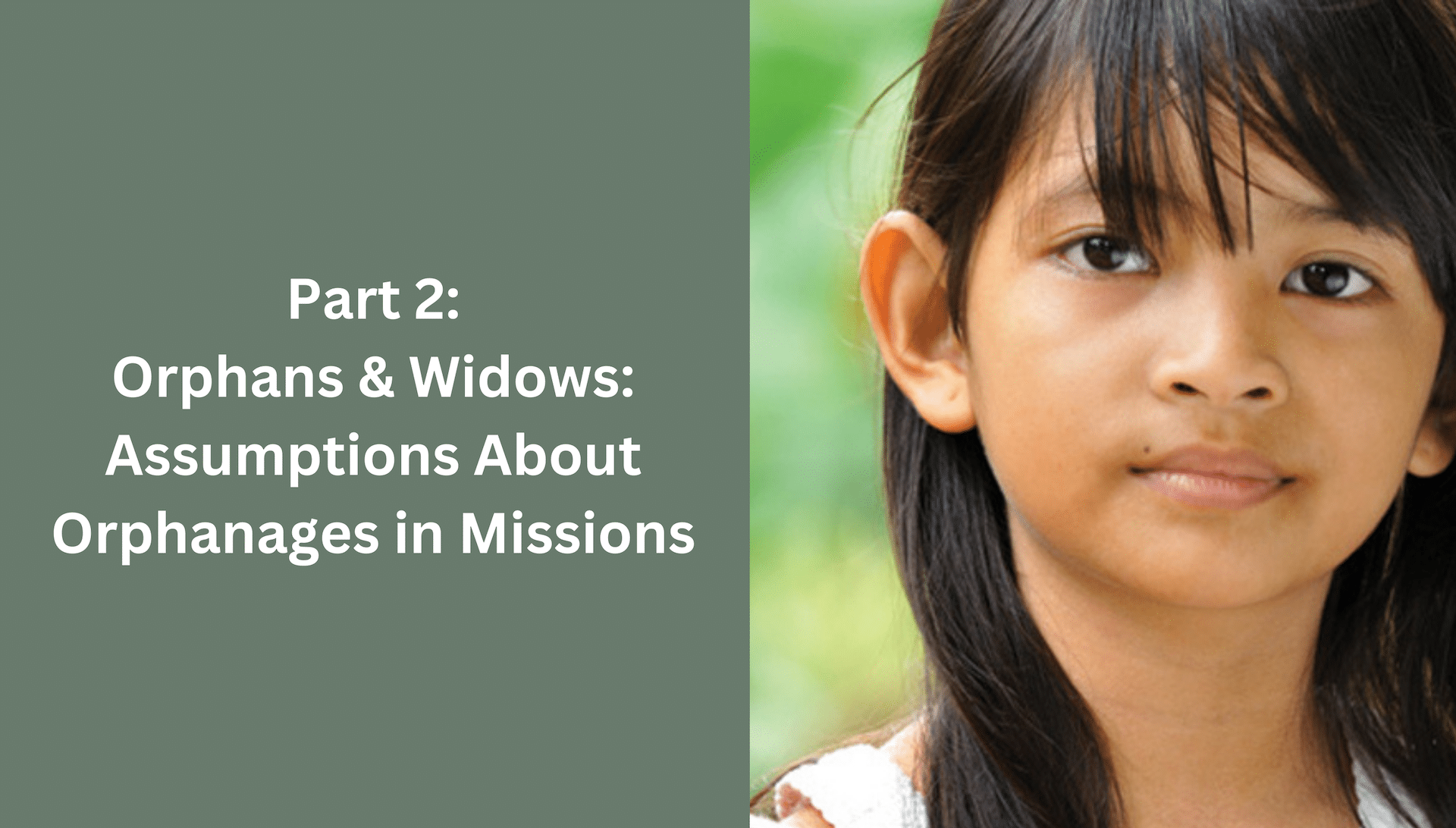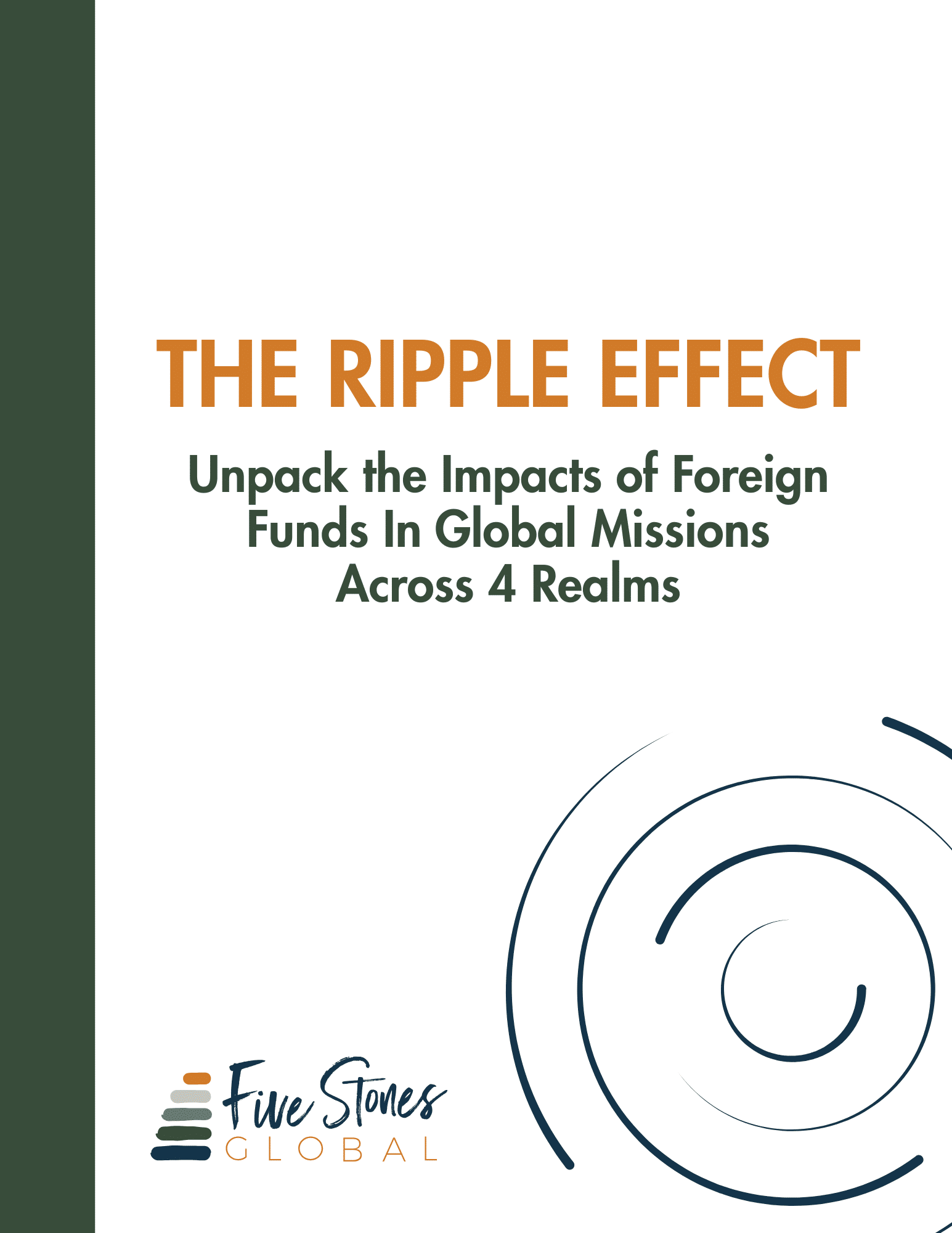By Jean Johnson
On May 10, 2015, I wrote a blog entitled, Orphans and Widows – Reverse Orphans. Today, we will talk about assumptions relating to orphanages in missions. I asked a colleague to write up his thoughts on orphanages. Why him? Because he served as a missionary and orphanage director and we can learn from him and others who have ample experience in this area. In his reflection, my colleague shared four assumptions that people hold about orphanages in global mission efforts.
I am NOT inviting you to take a serious look at orphan care as a means to rant and rave about what is wrong, but as motivation and a tool to discover new and effective ways to care for orphans. If we don’t look at what is trendy and not working, how will we implement a strategy that hopefully will be effective? The following was written by Mark Bouman.1
ASSUMPTIONS:
- Orphanages are an effective tool for planting the Gospel
- Orphanages are only used when no other options exist
- Orphanages are sustainable
- Orphanages have few unintended consequences
REALITY:
Assumption #1: Effectiveness
When humanitarian needs dictate starting an orphanage, missionaries wrongly assume it will become an effective tool for spreading the gospel. While the kids often become Christians because of the significant investment of the missionary and staff, the long term resources and commitments are often counterproductive.
Assumption #2: No other option
1. Orphanages are often started even though they are not needed. It was not uncommon for new missionaries from other mission organizations who are just starting out to ask for a tour of the orphanage. During my conversation with them they would identify their intentions. They wanted to start an orphanage and they wanted to see one up close so they could get a feel for how it’s done. During the course of the conversation I always asked them why they wanted to start an orphanage. They almost always said the same thing. “They wanted to help all the hundreds of orphans wandering the streets.”
The problem was there really were not bands of kids roaming the streets. In fact, the AOG orphanage had a capacity of 140 children and the orphanage had less than 100 children in its care. We could easily take an additional 20 to 30 children and not have to make any major changes in our operation. I told them that I could give them the names of five other orphanage directors who also had orphanages that were underutilized and would be happy to take in any kids they found wandering the streets. The results were always the same. The new missionary would invariably open a new orphanage, often with a capacity of 20 to 40 children. After building a few buildings they would then find themselves with the problem of not finding enough orphans to fill it. After a few months of operation, I would pay them a visit. Nearly every time the results were the same. They “found” orphans for the center but in truth the kids usually had a mother or father or sometimes both. The donors expected to find orphans and the missionary often had to lower the standard of who the orphanage would accept until the center was filled up.
I once had another orphanage director approach me about shutting down her orphanage and transferring their kids to our orphanage. The director told me she realized many of her assumptions about running an orphanage were wrong and she realized the whole operation would not last. When the new kids came into the orphanage we found that more than half of them had families and were able to go home.
2. As the orphanage begins to shrink in size through attrition, pressure from donors and other missionaries often causes the orphanage director to continue to “find” orphans to justify the presence of the orphanage. So, even though the need no longer exists the orphanage continues to operate as before.
Assumption #3: Sustainability
1. As the years come and go funding often becomes more difficult. Those that started the orphanage are long gone as well as the relationships that facilitated the funding. Each new director often finds themselves having to raise funds for aging buildings as well as aging kids. As each nation matures and the churches begin to prosper orphanages often lag and their usefulness begins to be called into question. National pastors see the orphanage as competition for scarce resources. Other missionaries often are asked to find funds for the orphanage even though they are not actively involved in its ministry. Once an orphan is accepted into the orphanage, the orphanage is committed to at least 10+ years or more of ongoing support. When an infant is accepted the support can last up to 18 years. Often the support continues through college or an additional 4+ years.
2. Orphanage directors often feel they can never leave the work. Imagine how your kids would feel when your dad decided he didn’t want to be your dad anymore and you recruited someone else to replace you. Your kids would hardly feel compelled to respond the same to the new dad.
Assumption #4: Unintended consequences
1. It’s not uncommon for an orphanage director to have a problem with something called an “affirmation addiction.” The praise one receives from being an orphanage director often is the real motive for opening an orphanage, not the need. The only real need is the orphanage directors’ need to be affirmed. Orphanages are the perfect place for affirmation junkies. The orphanage director can place themselves in a position of being the most important person at the orphanage. Everyone from the kids and staff as well as people from churches in America will heap praise on an orphanage director. It was not uncommon for complete strangers to praise you for being an orphanage director regardless of their opinion on Christianity.
2. Orphanage directors too often have succumbed to moral failure because of the pressures associated with the work. Trying to solve everyone’s problems, feeling like they can never leave the position, pressure to find adequate funding, and compassion fatigue are all too common problems that leave the director in a vulnerable position.
Final Thoughts:
An orphanage should be a last resort option. Good intentions do not always make for good results. Here are a few things to consider when deciding on starting an orphanage.
1. When you think there is no other option but to start an orphanage, think again. Go back and ask yourself, “is there anything we believe that is not true.” The visitors who came to me ALL were convinced they KNEW there were hundreds of orphan kids wandering the streets. The kids they saw were not orphans, mostly runaways. Over the years we took in more than 100 street kids. Not one of them stayed long in the orphanage. As soon as we set boundaries for them they ran away or went home again. Also, they never considered the fact that there were already plenty of facilities available and didn’t need to build a new orphanage.
2. Does the organization or church that is promising funding realize they are expected to fund the orphanage for at least 20 years?
3. Avoid purchasing land for the orphanage. Leasing is less costly and avoids fights over ownership of land. A twenty five or thirty year lease should be considered.
Usually, war brings orphans and low land prices. The first missionaries are often able to buy land cheap before businesses move into an area. Over time land prices rocket up and everyone seems happy about it. But, once the orphanage is ready to wind down its operation the national church often has its own ideas about what should happen to the land. When the land was only worth a few thousand dollars no one cared. But, when it’s worth more than a million, everything changes. Many relationships have been irreparably harmed by this problem.
As Mark reveals, assumptions often drive our strategies. Then when reality sinks in, we don’t want to make changes or don’t know how. Thank you Mark for sharing your experiences, so we can learn from you. Stay tune for Part 3: Widows and Orphans: Rethinking Orphan Care.
1 I have posted Mark Bouman’s excepts as is (without edits or adaptations).


